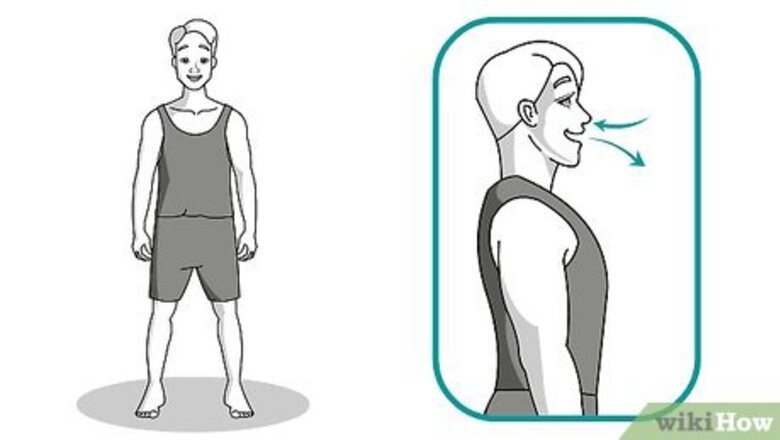
views
Standing Back Stretch
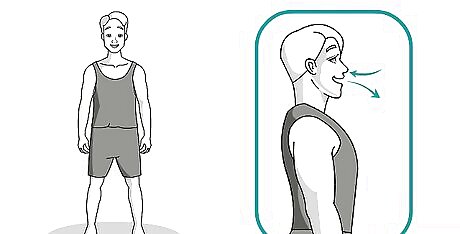
Stand erect, relaxed, with your hands at your sides. Breathe deeply in preparation for your stretch - this will help oxygenate your muscle tissue, promoting healing and minimising lactic acid formation, which causes soreness. Find a stretching area where you have privacy and are unlikely to be surprised. Although unlikely, a jerking motion while stretching can hurt your back.
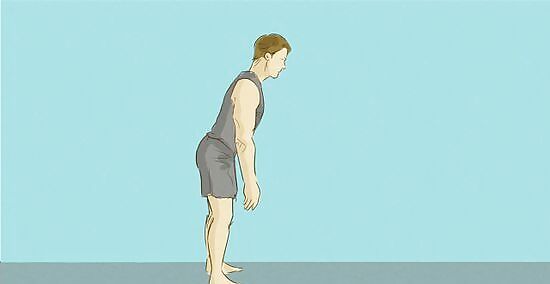
Bend forward slowly. Allow your arms to relax. They should drop and hang below you. Pay attention to the way your lower back feels. It's normal to feel light tension like you might feel in any other stretch. If you encounter any pain while leaning forward, stop immediately and try a different stretch.
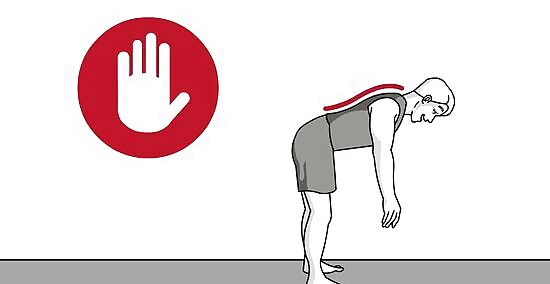
Ease forward until you feel slight "stretching" tension in the lower back. At this point, stop leaning forward and maintain your position. Be comfortable--do not bend to the point of feeling pain. Do not bounce to get farther downward.
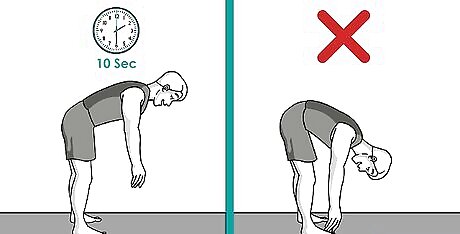
Hold the position for ten seconds. You should feel your lower back begin to stretch. Because you're staring at your feet, it can be tempting to try to touch them. Don't do this - you can hurt your back by stretching it too far.
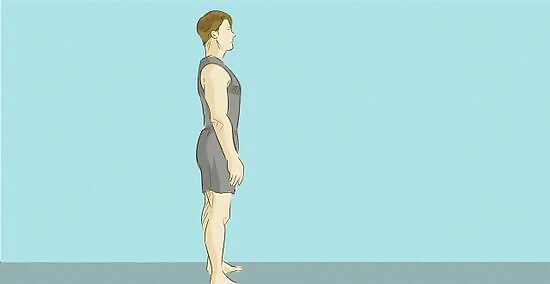
Raise up to a standing position. Begin to lean backwards slowly. It may help to maintain your balance if you bend your knees slightly.
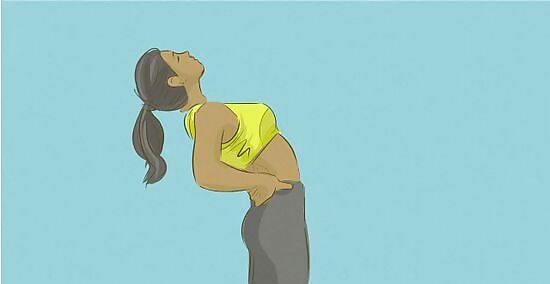
Gently bend backward with your hands on your hips. As always, do not bend to the point of feeling pain.
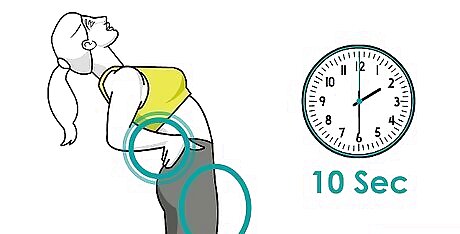
Hold this position for ten seconds. You should feel a slight stretch in your lower back and/or the front of your hips.
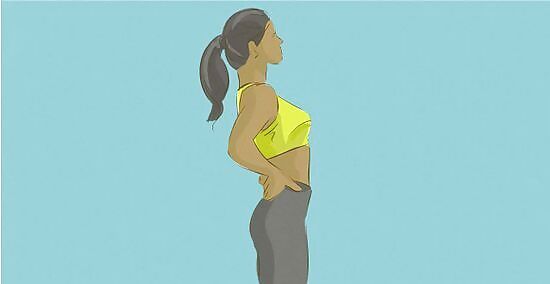
Gently return to standing erect. Repeat these stretches 2-3 more times or as needed.
Supine Knee-to-Chest Stretch
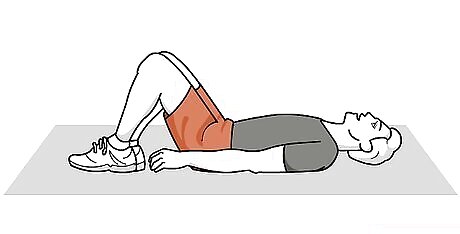
Lay on your back on a carpeted floor or exercise mat. Bend your knees and keep your feet flat on the floor. This stretch is great for people who already have lower back pain. It stretches the lower back along with supporting muscles in the hips and glutes.
Keeping your leg bent, slowly bring one thigh up in the direction of your chest. Grasp the leg with both hands under the knee. Gently pull the leg in towards your body. You should feel a gentle stretch in your lower back, glute, and or hip. The lower back is a complex structure comprised of many intertwined muscles and nerves - improving hip and glute flexibility can have a positive effect on back pain.
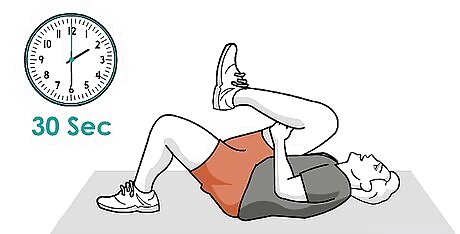
Hold the leg against your chest for about 30 seconds. Keep your other leg in a comfortable position - usually against the floor, either straight or bent at the knee. To add a hip-flexing element to the stretch, use your hands to rotate your leg by gently pulling your shin across your body.
Ease your leg back to a resting position, then repeat for the other leg. Repeat 2-3 times per leg for a thorough, even stretch. EXPERT TIP Eric Christensen, DPT Eric Christensen, DPT Physical Therapist Eric Christensen is a Physical Therapist based in Chandler, Arizona. With over a decade of experience, Eric works in both orthopedic and neurological fields and specializes in custom orthotic prescription and casting, vestibular reprogramming, and manual therapy. He holds a Bachelor’s degree in Exercise Science with a focus in Sports Medicine from Colorado State University and a Doctor of Physical Therapy from Regis University. In practice, Eric takes a developmental approach to rehabilitation utilizing the Selective Functional Movement Assessment. He uses functional movement patterning and manual therapy to return patients to prior levels of function. Eric Christensen, DPT Eric Christensen, DPT Physical Therapist Try a gentle windshield wiper stretch. The windshield wiper move stretches out stiff lower backs. Just lie flat with knees bent and feet together, then let both knees slowly sweep from side to side, like a wiper going across a windshield. It's easy!
Cat - Cow Stretch

Lower yourself onto all fours on an exercise mat. Keep your arms and thighs at approximately right angles to your torso. Don't let your knees slide behind you as if you were about to do a knees-down pushup.
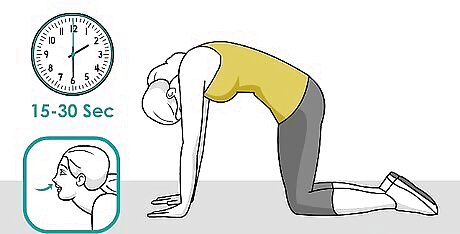
Breathing deeply, arch your back like a cat. Hold this position for fifteen to thirty seconds. You should feel a light stretch in your lower back. You can fine-tune the stretch by making small adjustments in the way you arch your back. Because you utilise your abdominal and back muscles to arch your back, this stretch doubles as a core-strengthening exercise. It's normal to feel a very light "burn" in the back and abdominals while performing this stretch.
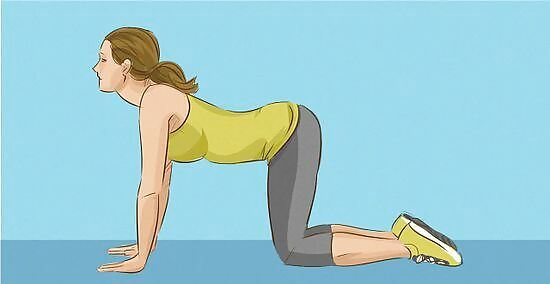
Gently return to resting position. Allow your torso to bend toward the floor, forming a downward curve. Hold this position for fifteen to thirty seconds, feeling a light stretch in the lower back.
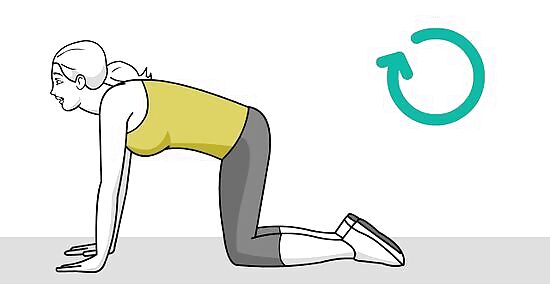
Repeat stretch as needed. An average cat-camel session consists of two to four repetitions. Because of its core-strengthening properties, the cat-cow is a good addition to a well-rounded core workout.
Yoga Poses

Choose the pose that's right for you. A wide variety of yoga poses that stretch the lower back exist. Most should be safe for healthy people. However, if you have a back injury such as a herniated disc, some stretches may worsen your condition. Poses that involve bending or twisting at the waist, especially while bearing weight, can be particularly harmful. If you are unsure about a pose, consult a doctor or physical therapist. Below are a few common yoga poses for the back.
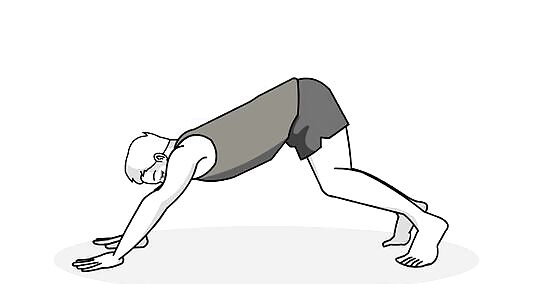
Try downward-facing dog. This is a well-known yoga pose that serves as a great all-over stretch and core-strengthening exercise. Also, it stretches the back extensor muscles, which help support the lower back and stabilise the spine. Begin on all fours, with your hands slightly in front of your shoulders. Press back on the floor with your hands to lift your body into the air, straightening your knees as you go. Form an upward-facing V with your body, with your glutes as the highest point. If you can, try to press your heels to the floor for a great calf stretch. Hold the position for about twenty seconds, repeating several times.
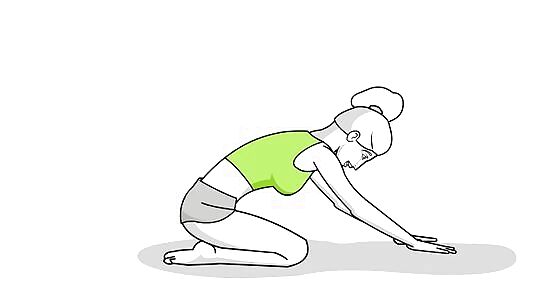
Give child's pose a try. This relaxing stretch provides great back flexibility. It also serves as a fantastic hip, shoulder, and chest stretch. Begin on all fours. Stretch your arms out in front of you, allowing your face to lower to a position near the floor. Gently sit back. Allow your glutes to rest just above your heels. As you ease back, feel the gentle stretch in your lower back. Hold this position for twenty to thirty seconds, repeating as needed.
Snake into the cobra pose. This targeted back stretch allows a great deal of control - you decide how much you want to stretch your back. It's also a good back strength-builder. Begin by lying face down on the floor. Stretch your feet back so that the tops of your feet are touching the floor. Place your palms on the floor at chest level. Pushing down with your thighs and hips, use your hands to slowly lift your upper body up. Continue to push your upper body up until you find a comfortable stretching point. Pull your shoulders back and keep your hips narrow through your stretch. Hold the stretch for fifteen to thirty seconds, repeating as needed. To add an extra back-strengthening dimension to the exercise, use your back muscles to assist your arms when you raise your lower body.

















Comments
0 comment